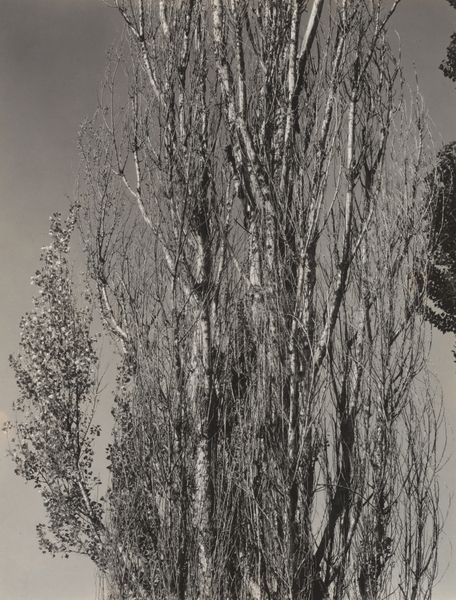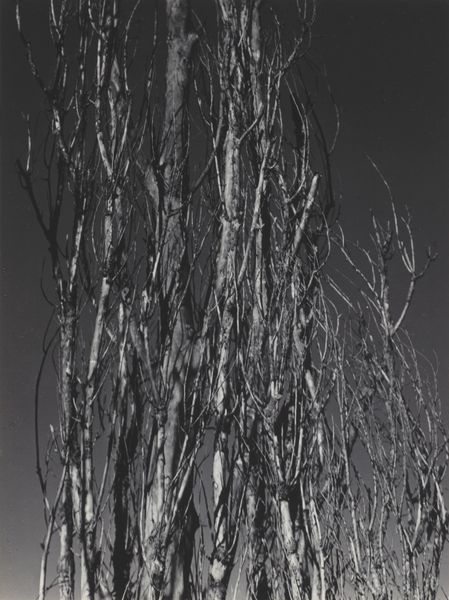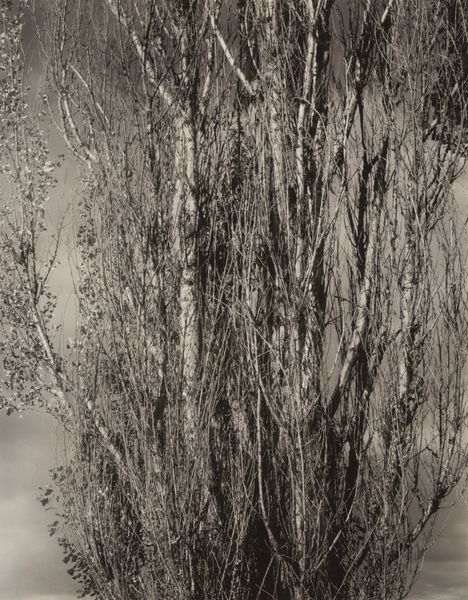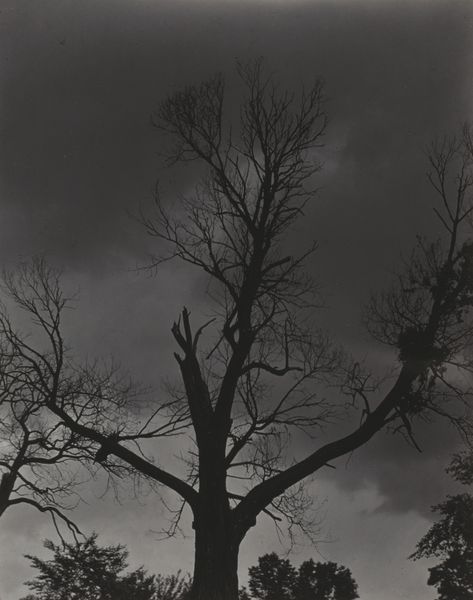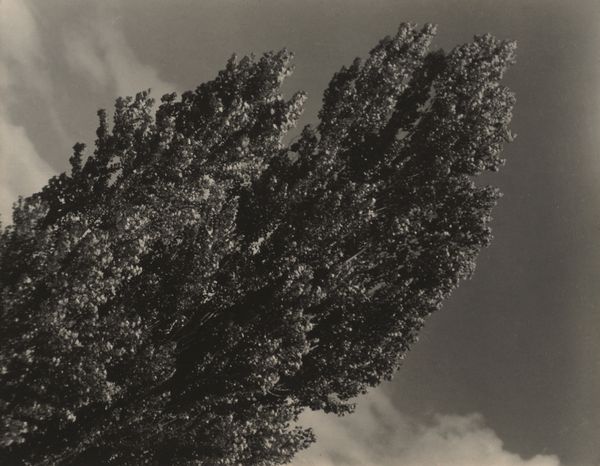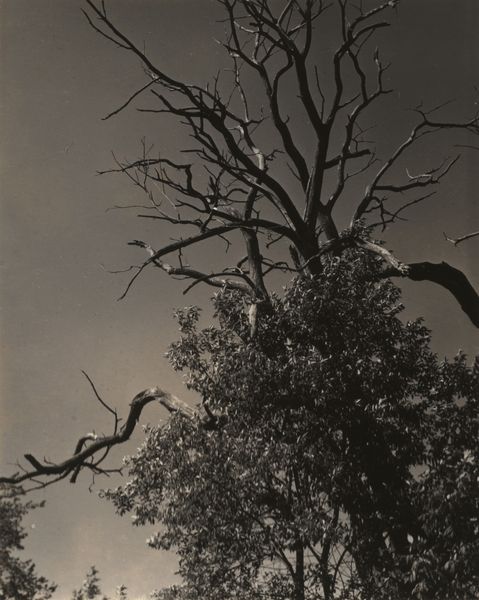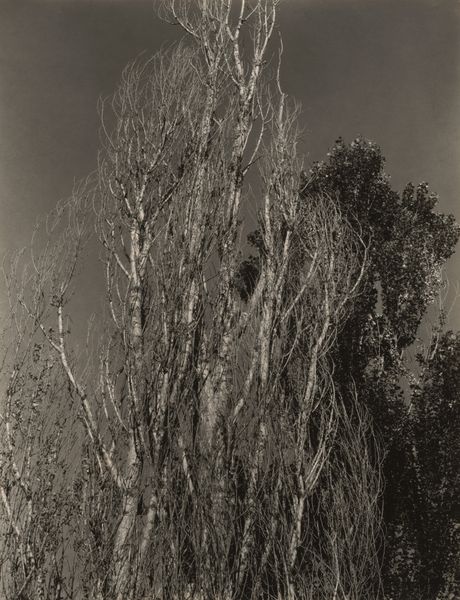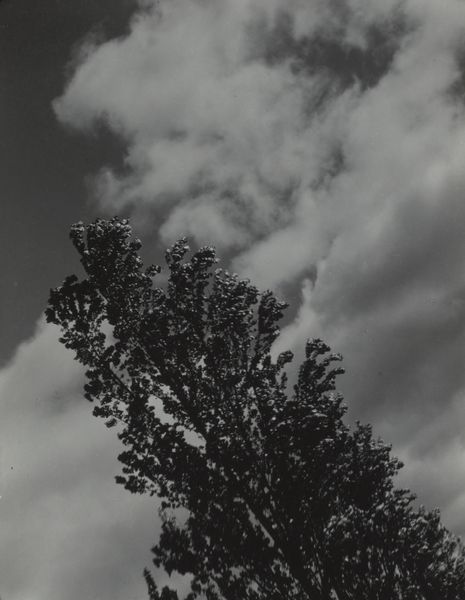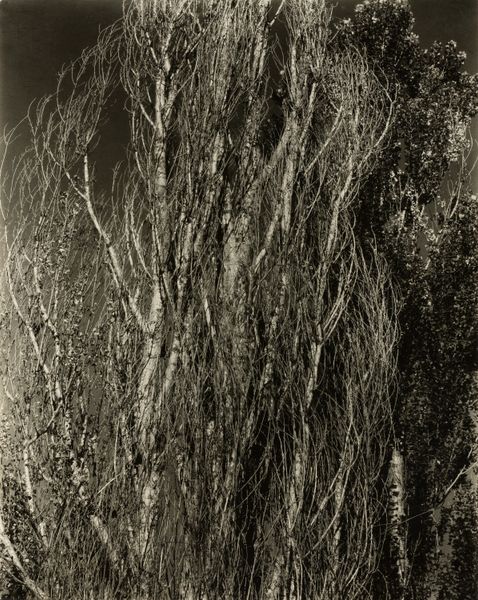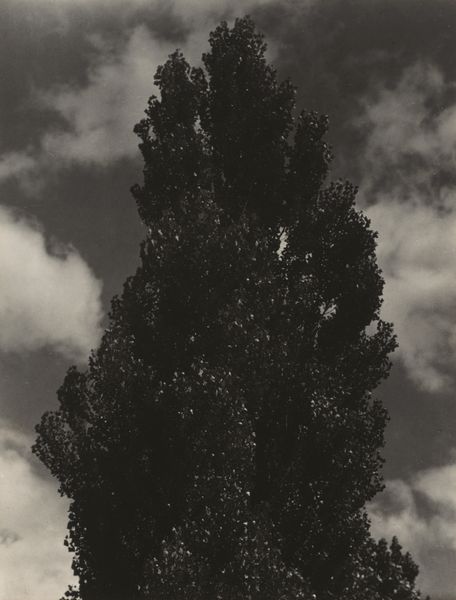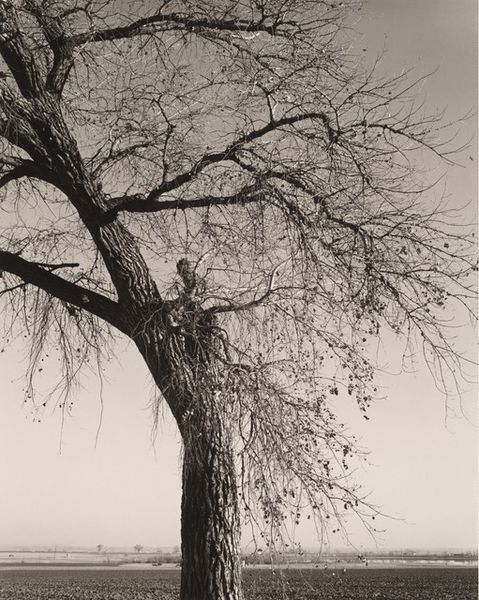
photography
#
landscape
#
photography
#
charcoal
#
modernism
Dimensions: sheet (trimmed to image): 11.7 × 9.1 cm (4 5/8 × 3 9/16 in.) mount: 33 × 26.9 cm (13 × 10 9/16 in.)
Copyright: National Gallery of Art: CC0 1.0
Curator: Alfred Stieglitz captured this arresting photograph, Poplar—Lake George, in 1936. Editor: The close cropping immediately strikes me—it’s a bit claustrophobic, actually. There's an intensity in the texture, almost tactile. Curator: Absolutely, the photograph, crafted with silver gelatin print, emphasizes form and detail. Stieglitz manipulates the medium to highlight the very tangible surfaces of the trees, defying conventional notions of picturesque landscape photography. Editor: That reminds me—I read this as a deliberate challenge to idealized pastoral scenes that often romanticize nature. Stieglitz instead focuses on the stark reality, reflecting perhaps a period of societal unease, particularly with the Depression still casting a long shadow. These trees feel resilient, but also burdened. Curator: Indeed. Stieglitz, throughout his career, actively engaged with materials—from platinum prints to palladium—experimenting with techniques to achieve different effects, and here that materiality becomes a focal point. This wasn't simply about capturing a view; it was about making something with the photographic process itself. The print size also speaks to the physical labor invested in creation, and its impact on the viewer is one of imposing scale rather than diminutive nature photography. Editor: This piece can also be interpreted through the lens of identity. Lake George was profoundly personal to Stieglitz; it was associated with his family estate and a retreat from the burgeoning industrialization of America. His deep connection begs the question—what statement is Stieglitz making, and on whose land? Does the image become complicated if you factor in indigenous ties to this place? Curator: It prompts vital conversations about land use and the artist's engagement with space, certainly. Thinking about photography as both a commercial enterprise and medium for high art is important here. Editor: Precisely! And even within photography, understanding his motivations opens further perspectives beyond just aesthetic appeal. Curator: Reflecting on Stieglitz’s methods reminds me how artistic intention and societal context inform not just the 'what' but profoundly shape the 'how' of artistic expression. Editor: Considering those contexts and labor, the photo becomes richer, allowing us to challenge what defines "nature" versus artifice, prompting discussions beyond purely visual impact.
Comments
No comments
Be the first to comment and join the conversation on the ultimate creative platform.

